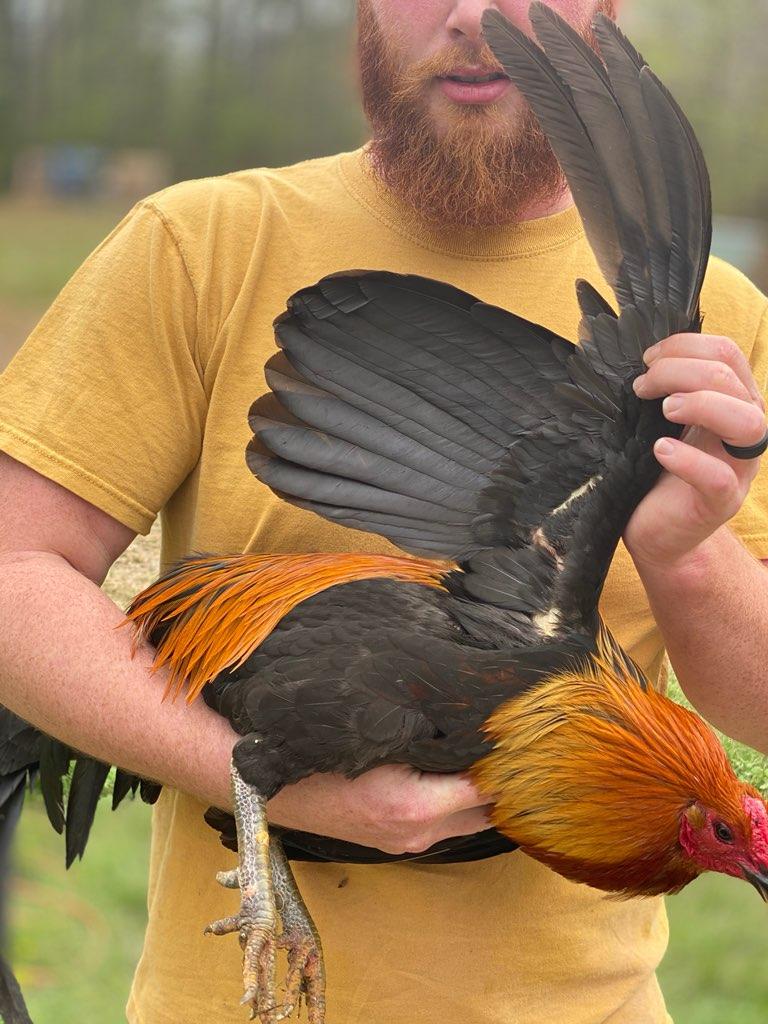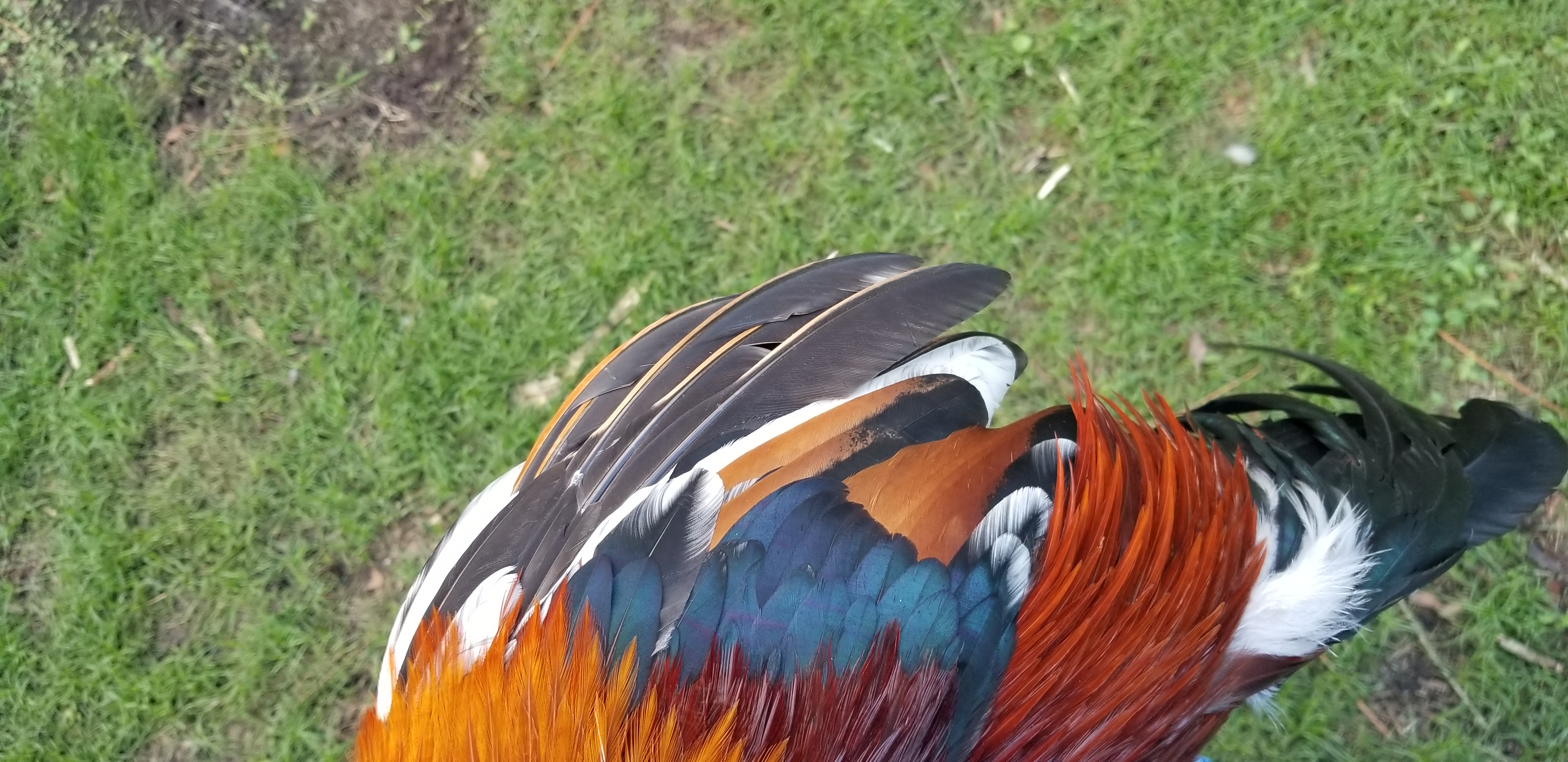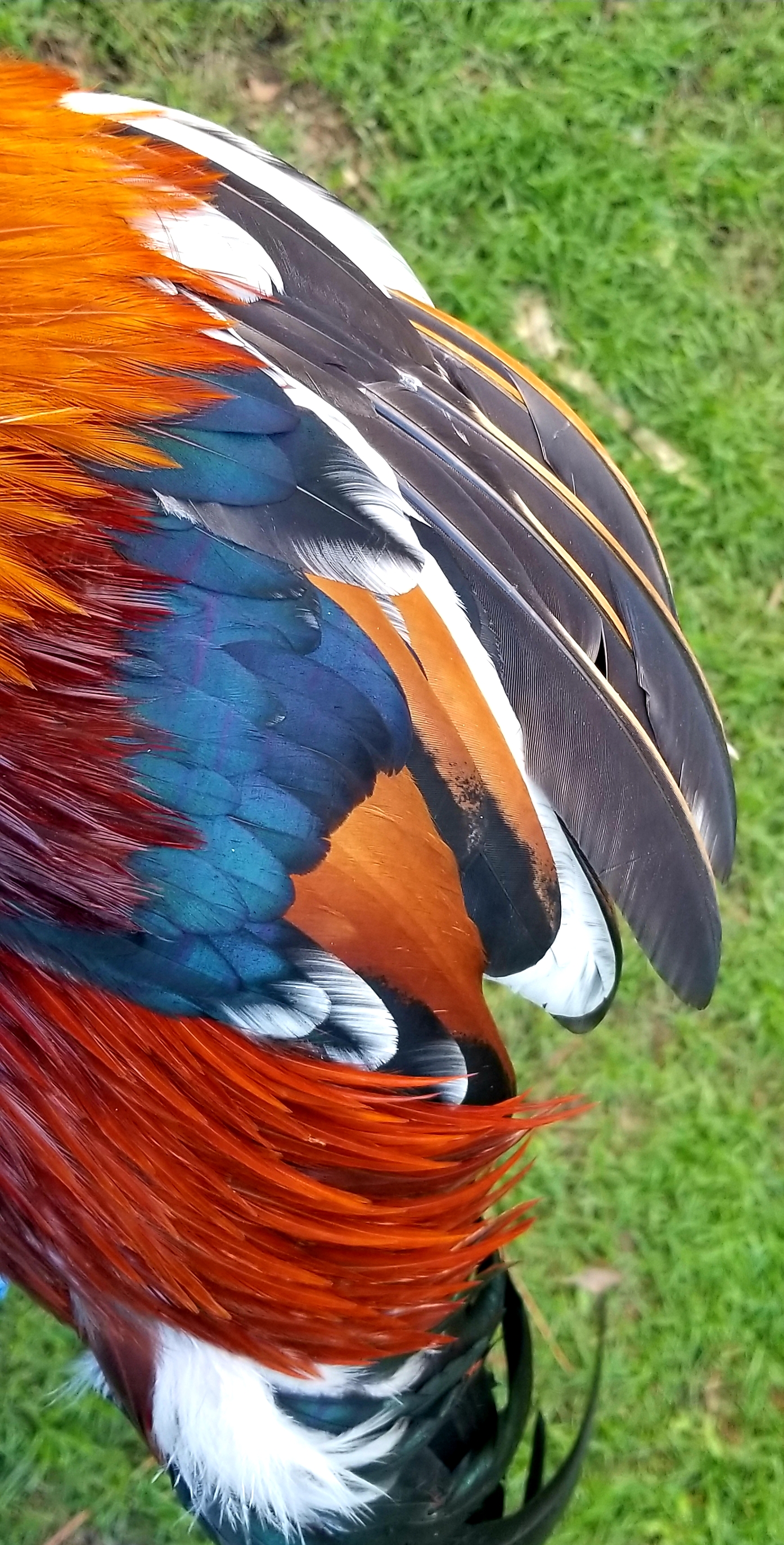Home › Forums › Breeding and Selection › Breeding Question
Tagged: Defects
-
AuthorPosts
-
-
April 4, 2019 at 11:30 PM #11253
AnonymousInactive@Hello Kenny,
If I had a Cock and hen/pullet with a Cock together for a week or so. Then she starts laying eggs so I put the Hen/pullet in a different pen with a nice comfortable nest. In theory for how long could she go without the cock and still lay fertilized eggs? Ballpark figure. Let me know, let us know, thanks…
-
April 5, 2019 at 1:35 PM #11254
Once a hen or pullet has been copulated by a cock or stag, she could conceivably be fertile up to 3 weeks. The strength and endurance of their sperm is depended on the health and vigor of the stag or cock and their level of fertility. Not all stags and cocks are the same. Hatchability is a heritable trait, where fertility is not. Make sure to provide your stags and cocks with good proteins and plenty of fresh clean water. I would make sure the hen is with the cock at least once a week.
-
June 5, 2019 at 5:08 PM #11453
AnonymousInactive@I have 3 way crossed hens , 1 crossed cock. One cock that appears to be of a strain and consistent with his breed, where do i start?
-
June 6, 2019 at 8:36 AM #11460
depending on the quality of these birds, we can start a strain from that.
Can you post a picture(s) of those birds, here on the forum, so I can see what they look like?
The fact they are crosses is no issue if you are just using them as seed fowl. But they need to be good representatives of their breed, have good conformation, no defects, and healthy.
The seed fowl you start with is the most crucial time, for this determine how well the strain will develop and how long it will take to make them a true strain.
-
June 11, 2019 at 11:03 PM #11487
AnonymousInactive@About 2 years ago I got from you maximum line I have 2 cocks which I like there confirmation body structure and plumage but they are a little man fighters but when I get them they stop peking. Is that normal for the maximum line to act? Also I would like to send you pics of all 12 maximum line cocks and hens to see which one would be my best seed flow to start my breading program with.
-
June 12, 2019 at 8:35 PM #11493
are they with hens? They tend to be aggressive when with the hens, otherwise they are usually fine.
You should be able to post the pics on here, as long as they are not large files.
-
-
June 13, 2019 at 8:49 AM #11499
AnonymousInactive@Kenny yes I had not thought of that. I’ll get those pics ready and post them.
-
June 28, 2019 at 5:48 AM #11666
AnonymousInactive@Ive got a question for you mr kenny. Ive bred some greys pure and chose the best stag to breed hes better than all the bothers by a good bit, and id like to use him to breed. But theres a catch hes mean as a snake. Now this could be because hes young and hasnt been handled much yet. His dad was mean and ive gentled him down a bit. Is this somthing i should cull or can i fix this further down the road?
-
June 28, 2019 at 4:03 PM #11667
Genetically, manfighting and temperament is a polygenic trait. However, it can be an environmentally induced behavior. I normally cull for this trait/behavior, but in this situation, you can test this trait.
By breeding him, hopefully to a calm and even tempered hen, and checking out the behavior of his offspring, or breeding to his offspring that don’t show this behavior, you can determine if this is genetic or environmental.
Since it is a polygenic trait, this can be improved through selection.
If it is genetic, do not breed him to his mother or sister.
If it’s not genetic, no worries.
-
-
June 28, 2019 at 5:14 PM #11668
AnonymousInactive@Ill bet its genetic because out of that particular mating all the stags came mean. His dad is mean getting better but still not a gentle rooster. I have other mating from different birds that most came gentle so ill just go with them and do a half brother sister mating. Thanks for the advice.
-
June 30, 2019 at 12:30 PM #11678
AnonymousInactive@Okay ive got a question. On one of your podcast you say when crossing those offspring have 110%vitality or vigor. And when you breed those birds they are 70 to 75%. Now lets say your using the founders program to start a line how many years will it take to get back to 100%? I couldnt remember which show it was on.
-
July 2, 2019 at 11:48 AM #11683
Hey Brooks, You will never reach 100% of the parents, but, not to worry, you can get to 99.9999% of the original parents. In all actuality, the difference will be unnoticeable. By using the Founders Program you will be creating an entirely different and new strain. In 5 or 6 years they will not resemble the original seed fowl at all.
-
-
July 2, 2019 at 7:38 AM #11681
AnonymousInactive@I found it on 3 most dangerous breeders. You say the initial cross is 130% then breeding those offspring together youd get about 80%. So i guess if id make a line of fowl made from 2 family’s it would take at least 3 to 5 years to get coming uniform and 100%?
-
July 2, 2019 at 6:15 PM #11685
AnonymousInactive@Hello , i have a question i made a cross of 2 different green leg hatch types i then line bred to the hen side until i reached 7/8 and kept a cock from that mating as my brood cock . i bred that (7/8 cock) one time back to his mother and kept 215/16 hens then crossed them to the (7/8 cock ) and i kept 1 bull stag and 4 hens from one (15/16sister ) and only 1 hen from the other (15/16 sister) that now is showing a different color eye and rye tail and will be culled, my brood cock passed and also the mother to the stag so now im left with brother sister matings can this line be saved by inbreeding ?
-
July 3, 2019 at 7:49 AM #11686
To the answer of your question, can the family be saved by inbreeding? The answer is – Absolutely Yes!
Your situation is quite common, and why most breeders fail. This is why I advocate for establishing multiple lines within a family. If you have not done so, make sure to read the Founders Program. Check out the various stages of this program. Some will start from the beginning, and some will start the program from a specific stage. I suggest you follow this program. Determine where in the program you are, and start there.
In the Founders Program and the Course on Line-breeding, I talk about the importance of creating and maintaining multiple lines.
so, yes, you can save the family by breeding the brother to his sister.
I want you to check out 3 courses:
The Founder Program CLICK HERE
COURSE #1 – The Practice of Inbreeding (CLICK HERE)
COURSE #2 – The Practice of Line-Breeding (CLICK HERE)
-
-
July 26, 2019 at 12:06 PM #11803
AnonymousInactive@Who on here and also Mr. Kenney prefers breeding hens with spurs? Does anyone know if this trait is dominant or ressecive? If not ill try to figure that out in the next few years. Personally i dont believe it matters but i prefer them to have spurs. I feel its a good trait to have and think if they were to evolve naturally it would be a useful trait in protecting themselves and offspring.
-
July 28, 2019 at 5:31 PM #11808
I prefer hens that have spurs, but it’s one of the last traits to select for.
As far as the genetics – Scientist do believe there is a genetic basis, but they still have not determined how it’s passed to the offspring. Just make sure that you select hens that either have spurs or don’t. I would not breed a hen that has a spur on one leg, but not the other. Or hens that have multiple spurs.
This trait is improved through selection, so there is a genetic basis.
-
-
July 28, 2019 at 9:26 PM #11812
AnonymousInactive@Good take on spurs on both legs. I’ve seen many people breed hens with only one spur. I currently don’t don’t have any, but I only have a few birds.
-
March 23, 2020 at 5:58 PM #12625
AnonymousInactive@I am wondering if this is something he will pass to his offspring?


-
This reply was modified 5 years ago by
 Kenny Troiano.
Kenny Troiano.
-
This reply was modified 5 years ago by
 Kenny Troiano.
Kenny Troiano.
-
March 23, 2020 at 6:03 PM #12630
Wow, Vincent,
I’ve only seen that a few times in my life, but yeah, that is a genetic defect that can be passed to his offspring.
Do you have another cock to breed, besides him?
Also, are you seeing the same thing in the hen?
-
This reply was modified 5 years ago by
 Kenny Troiano.
Kenny Troiano.
-
This reply was modified 5 years ago by
-
This reply was modified 5 years ago by
-
March 23, 2020 at 5:58 PM #12626
AnonymousInactive@

-
March 23, 2020 at 6:58 PM #12632
AnonymousInactive@I dont have a hen for him… I really love everything else about this rooster though. I was looking for a hen to go with him. Should I call the guy I got him from and see if he will let me trade for a different one or count my losses?
-
November 2, 2020 at 8:42 AM #13606
AnonymousInactive@Hi I have a Jonny jumper kelso line on my 3rd father daughter breeding the stags and hens come out better than there parents but are showing white in the wings and tail so if I’m breeding for type and form should I just keep going and breed to color later I will put a pic below
-
November 6, 2020 at 7:43 PM #13607
AnonymousInactive@
-
November 6, 2020 at 7:44 PM #13614
AnonymousInactive@
-
December 7, 2020 at 8:05 PM #13661
In the standard of perfection, the hen has a huge tail. At least more than what I am used to seeing, can the tail volume be bred up in time? Seems like poor tail feathers do get passed down in the offspring.
-
-
AuthorPosts
- You must be logged in to reply to this topic.

